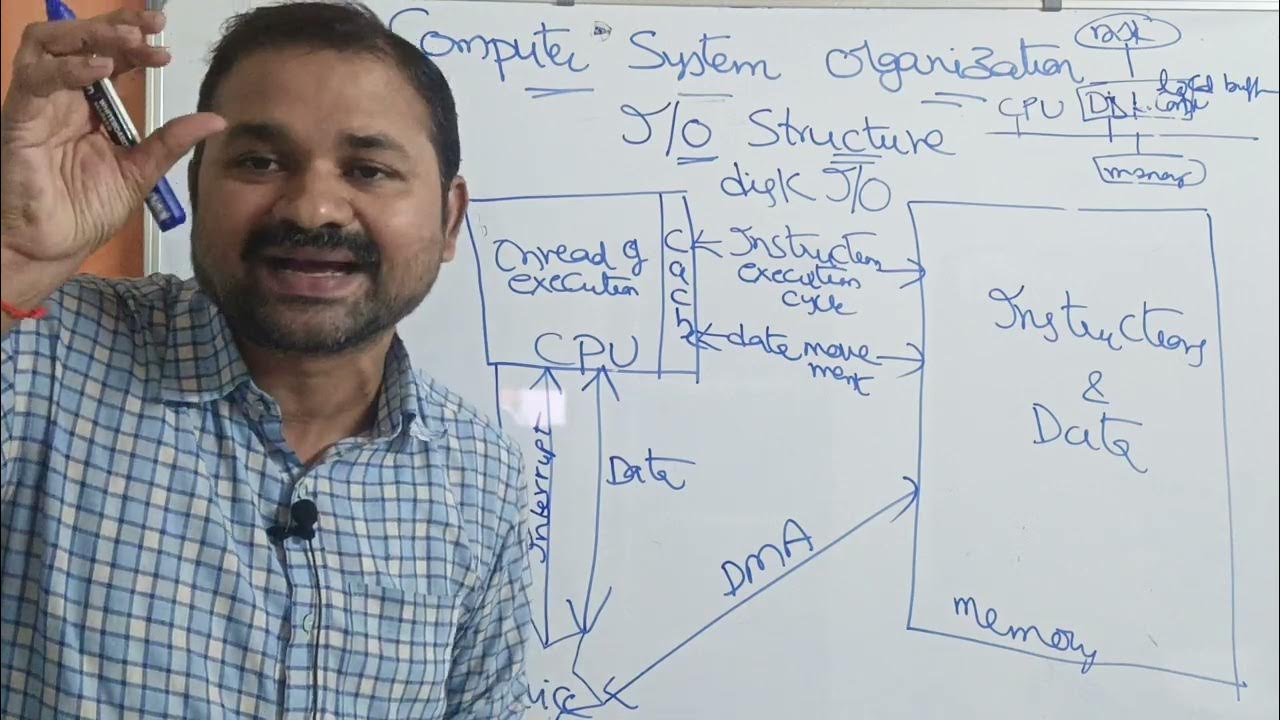Programmed I/O - Modes of Transfer - Computer Organization Architecture - Input Output Organization
Summary
TLDRThe transcript features a technical discussion centered around the process of transferring data between devices and memory. It touches on concepts like program operations, memory management, data transfer tools, and handling interrupts. Throughout, there is a heavy focus on subscribing to a channel and engaging with content on various platforms. Despite the technical context, the transcript also blends promotional language and jargon, aiming to educate viewers on specific procedures related to device and memory data handling while encouraging further engagement through subscriptions and social media.
Takeaways
- 😀 Data transfer between devices and memory is a key topic discussed in the script.
- 😀 The importance of interrupts and handling memory issues during data transfer is mentioned.
- 😀 There's a focus on the efficiency of transferring data between devices and memory.
- 😀 The script frequently encourages viewers to subscribe to a channel, reflecting a promotional tone.
- 😀 The role of 'specialists' in managing data transfer and handling input/output devices is highlighted.
- 😀 A reference to Soviet-era programming suggests a connection to historical development in data transfer technologies.
- 😀 There’s mention of using 'flight mode' and subscribing to updates on social platforms like Facebook.
- 😀 The script emphasizes solving problems related to computer memory, hardware, and device interaction.
- 😀 A variety of technical terms and jargon related to computing are used throughout the script.
- 😀 Multiple references to the importance of subscribing, liking, and sharing the video content on social media are scattered throughout.
- 😀 The script also touches on the importance of data security, using terms like 'memory theft' and 'protection'.
Q & A
What is the primary topic discussed in the transcript?
-The transcript discusses technical aspects of data transfer between devices and memory, focusing on interrupts, programming, and the use of different devices for input and output.
What is the role of 'interrupts' mentioned in the script?
-Interrupts are mentioned as a mechanism to pause the current process in order to transfer data between devices and memory efficiently, ensuring that critical processes are managed in real-time.
Why is 'subscribing' repeatedly mentioned in the transcript?
-The frequent mentions of 'subscribing' are part of a call-to-action, likely aiming to encourage viewers or listeners to subscribe to a channel, which appears to be related to the content being presented.
What does the script say about the transfer of data between devices and memory?
-The script highlights that data transfer between devices and memory is crucial for effective program execution, and the process often involves specialized input/output devices. It emphasizes the need for efficient data management.
What are the 'common devices' mentioned in the context of data transfer?
-While the transcript does not specify exact devices, it refers to 'input devices' and 'output events' as the most commonly used devices for transferring data in computing processes.
What is meant by 'data transfer tools' in the script?
-The term 'data transfer tools' refers to software or hardware tools designed to facilitate the movement of data between different components of a system, such as between memory and peripheral devices.
How does the script suggest dealing with memory and device-related issues?
-The script implies that managing memory and device issues requires an understanding of interrupts and system processes, and suggests that certain tools and methods can help transfer data without significant delays or problems.
Is there any mention of a specific programming approach or language in the script?
-The script does not mention any specific programming languages or approaches directly, but it does refer to 'programs' and 'processors,' indicating that programming logic is essential for managing data transfer.
What does the script mean by 'latest institute' and 'advanced operations'?
-The terms 'latest institute' and 'advanced operations' seem to refer to cutting-edge practices or technologies in computing and memory management, though they are presented in a somewhat unclear context.
Why is there mention of 'Soviet Union' in the context of data transfer?
-The mention of the Soviet Union seems out of place in the context of the topic of data transfer and may be part of a disjointed reference, possibly alluding to past technological developments or strategies used during that era.
Outlines

This section is available to paid users only. Please upgrade to access this part.
Upgrade NowMindmap

This section is available to paid users only. Please upgrade to access this part.
Upgrade NowKeywords

This section is available to paid users only. Please upgrade to access this part.
Upgrade NowHighlights

This section is available to paid users only. Please upgrade to access this part.
Upgrade NowTranscripts

This section is available to paid users only. Please upgrade to access this part.
Upgrade NowBrowse More Related Video

Computer System Operation in Operating system || Computer System Organization || Operating System

Khan Academy and Code.org | CPU, Memory, Input & Output

CS609_Topic001

Among Us Troll Mod - If You Die, You Win

Architecture des ordinateurs -assembleur 8086_partie 1

I/O Structure in Operating system || Computer System Organization || Operating System
5.0 / 5 (0 votes)